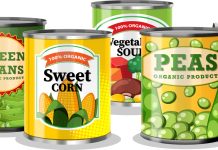 Mitigation of acrylamide content in wheat flour biscuits by chemical and physical approaches.
Mitigation of acrylamide content in wheat flour biscuits by chemical and physical approaches.
Acrylamide, as is well known, is a compound with genotoxic properties, which can cause carcinogenicity as it binds strongly to DNA. In this context, the aim of a recent study carried out by a group of Italian researchers (Lo Faro et al., 2022) was to modulate the formulation and production process of wheat flour biscuits in order to reduce the content of this compound, without affecting the chemical, physical and sensory characteristics of the product.
In particular, the experiment was conducted by varying the following parameters: Rising agent content, cooking temperature curve and steam release time during cooking. The results show that CIELAB colorimetric indices and water activity (aw) are the parameters that have the most significant correlations with acrylamide concentration and can therefore be useful as markers to predict the formation of this compound during the biscuit production process.
In addition, it was noted that the partial replacement of ammonium bicarbonate (9.0 to 1.5 g per 500 g flour) with sodium bicarbonate (4.5 to 12.48 g per 500 g flour), a decrease in temperature during the central cooking phase (170 to 150 °C) and a vapor release time of 3 min allow the level of acrylamide in the product to be reduced by more than 87 % compared to control samples. Finally, according to the authors, further investigation could identify other mitigation techniques to be used in conjunction with those proposed in the study to further decrease the content of this unwanted compound in cookies.
Influence of the cooking process and the type of recipe on the formation of Maillard’s reaction products in butter biscuits.
During food processing, the Maillard reaction contributes to the formation of certain undesirable toxic compounds, including the final products of advanced glycation (AGEs) and 5-hydroxymethylfurfural (HMF), which are related to various health risks for consumers. In this context, the objective of a recent study, carried out by a group of Chinese researchers (Hu et al., 2022), was to assess the effects of time (varying in the 8-15 min range) and cooking temperature (130-180°C), as well as sucrose (0-20 g) and butter (0-20 g) and egg (0-12 g) contents on the development of free carboxymethyl lysine (CML), free carboxyethyl lysine (CEL), protein-bound CML, protein-bound CEL, HMF, glyoxal (GO), methyl glyoxal (MGO), 3-deoxylucosone (3-DG) and on the sensory characteristics of butter biscuits.
The results show that AGEs levels initially increase and then decrease as a result of an increase in cooking temperature and cooking time. In particular, it was noted that HMF is highly sensitive to the thermal process. Changes in protein-bound AGEs occur later than those in free AGEs. As for the effects of the formulation, the authors point out that the presence of sucrose strongly promotes the formation of HMF and 3-DG. However, this presence, together with that of high butter levels, increases the sensory acceptability of the product. In conclusion, the results reported in the study are useful for the industry to improve the quality of this type of biscuit.
References: Lo Faro et al., Foods, 11, 2022, 1-14; Hu et al., Current Research in Food Science, 5, 2022, 940–948.



